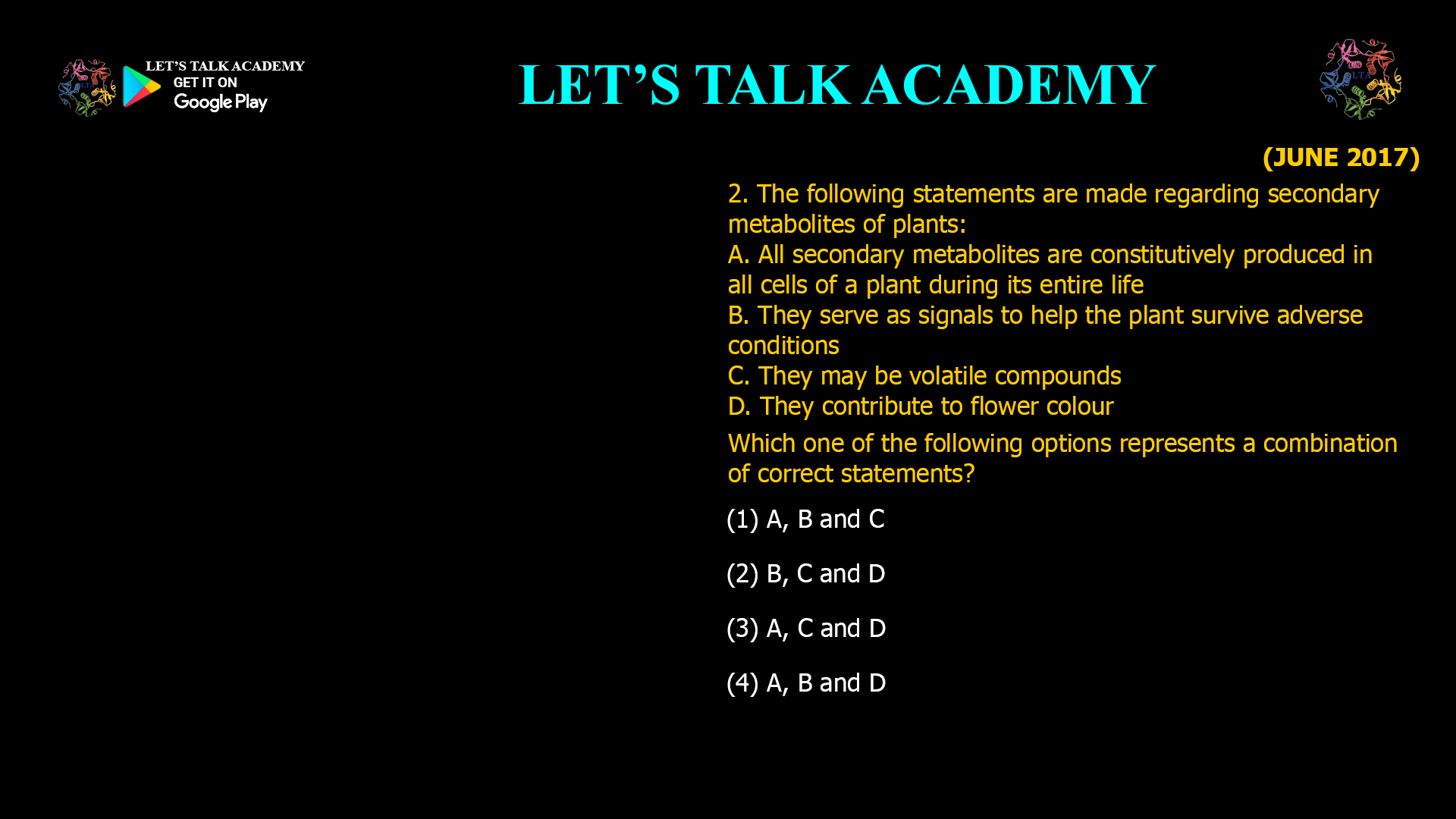- The following statements are made regarding secondary metabolites of plants:
A. All secondary metabolites are constitutively produced in all cells of a plant during its entire life
B. They serve as signals to help the plant survive adverse conditions
C. They may be volatile compounds
D. They contribute to flower colourWhich one of the following options represents a combination of correct statements?
(1) A, B and C (2) B, C and D
(3) A, C and D (4) A, B and DCorrect answer: (2) B, C and D
Explanation:
-
(A) is incorrect because secondary metabolites are not constitutively produced in all cells or during the entire plant life. Their production is often cell-specific, developmental stage-specific, or induced under environmental stresses.
-
(B) is true; many secondary metabolites act as signaling molecules that help plants respond to abiotic and biotic stresses, aiding survival under adverse conditions.
-
(C) is true; some secondary metabolites are volatile compounds, such as essential oils, that serve functions including pollinator attraction and defense.
-
(D) is true; secondary metabolites such as anthocyanins and carotenoids contribute to the coloration of flowers, which is crucial for pollination.
Option-wise:
-
(1) A, B and C — Incorrect due to A.
-
(2) B, C and D — Correct.
-
(3) A, C and D — Incorrect due to A.
-
(4) A, B and D — Incorrect due to A.
-
Secondary metabolites in plants are specialized compounds not produced uniformly or continuously but in response to developmental and environmental cues. They function as signals, attract pollinators through volatile scents and flower coloration, and protect plants from stresses, showcasing the ecological importance of these molecules.



